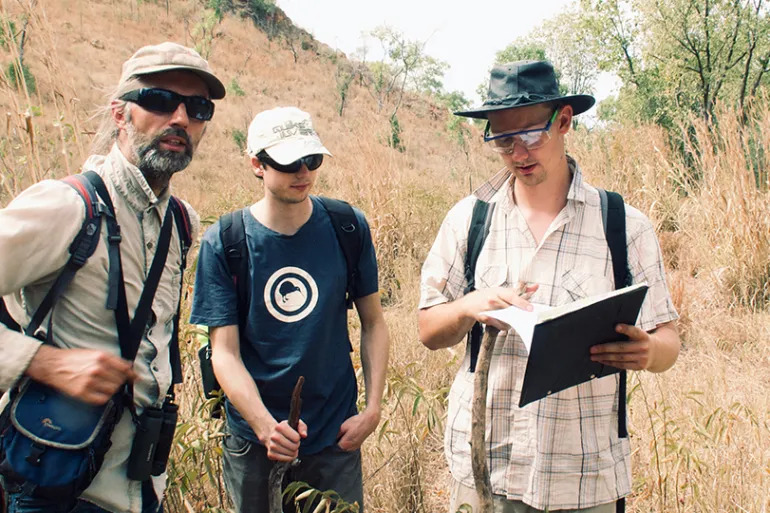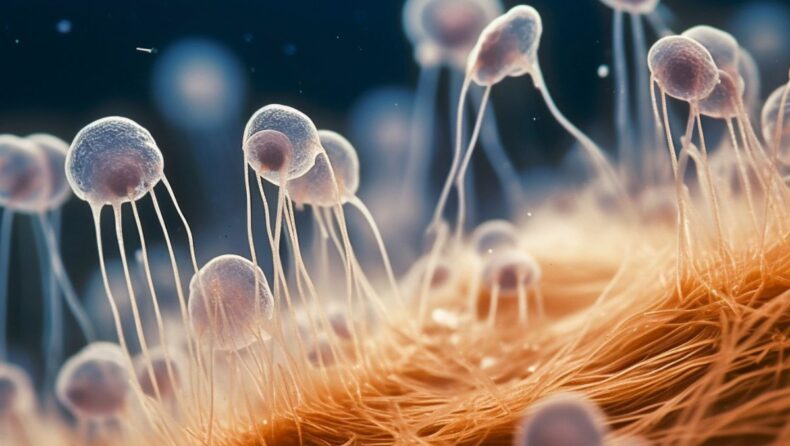In rocks that are billions of years old, researchers find evidence of a “lost world” of early ancestoral life.
Our knowledge of our prehistoric forebears could be altered by the finding of a “lost world” of ancient species that existed in the waterways of Earth at least 1.6 billion years ago. These tiny organisms, collectively referred to as the “Protosterol Biota,” are members of the eukaryotic phylum.
The complex cell structure of eukaryotes includes a nucleus, which acts as the cell’s command and information hub, and mitochondria, sometimes referred to as the “powerhouse” of the cell. On Earth today, eukaryotes include single-celled organisms including amoebae, fungi, plants, and mammals. The Last Eukaryotic Common Ancestor (LECA) is the common ancestor of all nucleated animals, including humans. More than 1.2 billion years ago, LECA was alive.
Oldest Predators on Earth
Our earliest known predecessors are thought to be members of the Protosterol Biota. Researchers from The Australian National University (ANU) made the discovery. These organisms may have been the planet’s earliest predators, say the researchers.

These extinct animals were prevalent in marine habitats all across the world and likely influenced ecosystems for a significant portion of Earth’s history. The Protosterol Biota predated the emergence of any animals or plants by at least a billion years, according to the researchers.
Researchers from The Australian National University said in a study that was published in the journal Nature that eukaryotic life seems to have flourished remarkably late in the history of our planet. These remains, according to researchers, are from a period of time known as the Proterozoic Eon, which is shrouded in mystery due to a sparse fossil record of the microscopic organisms that lived in Earth’s marine environment but was vital in the genesis of complex life.
The recently discovered fossils are of a primitive form of a steroid, a fat molecule that was an essential component of the cell membranes of the first members of the eukaryotic domain of now-dominant species. Scientists have long looked for the fossilised evidence of these early eukaryotes, but their physical remains are extremely rare. Because current eukaryotes are so powerful, it was thought that they should have influenced the old oceans on Earth more than a billion years ago.
Flourishing Era of Protosterol Biota
The Protosterol Biota were undoubtedly more complicated than bacteria and probably larger, according to Professor Jochen Brocks from the Australian National University (ANU), who made the finding with Dr. Nettersheim. However, it is unknown what they looked like. Professor Brocks asserts that these organisms flourished between roughly 1.6 billion years ago and 800 million years ago.

The ‘Tonian Transformation’ marked the end of this stage in Earth’s evolutionary history and marked the emergence of more sophisticated nucleated creatures like fungi and algae. However, the precise date of the Protosterol Biota’s extinction is unknown.
Before taking a job at the University of Bremen, Dr. Nettersheim finished the analysis as part of his PhD at the Australian National University. Scientists from Australia, France, Germany, and the United States participated in this investigation.













